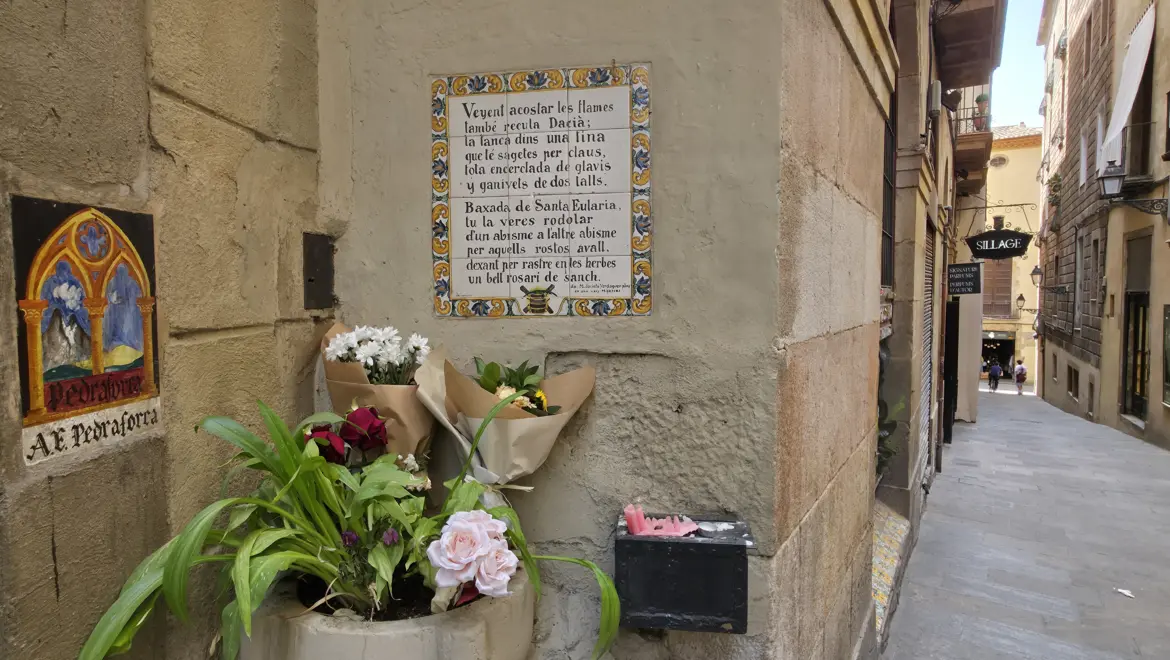Hola, world travelers! The Gothic Quarter always feels suspended in time – narrow alleys glowing in amber light, balconies draped with ivy, and the faint echo of church bells winding through the air. On a quiet morning, I walked across Plaça de la Seu, where the Cathedral of Barcelona rises like lace carved from stone. Pigeons circled above; the air smelled faintly of incense from a side chapel; and somewhere in the distance, a choir was rehearsing.
Standing there, you feel history breathing beneath your feet. These are the same streets where, seventeen centuries ago, a young girl named Eulàlia stood against the might of an empire. Her story, woven through Barcelona’s stones, is one of faith, innocence, and defiance, and it still whispers through the Gothic Quarter today.
The Legend of Saint Eulàlia
Saint Eulàlia (Santa Eulàlia de Barcelona) lived in the late 3rd century, when Christianity was forbidden under Emperor Diocletian. She was only thirteen, the daughter of a noble Christian family from Sarrià, and already filled with a sense of quiet conviction. When the Roman governor Dacian arrived in Barcino (the Roman city that became Barcelona) to persecute Christians, Eulàlia confronted him publicly. According to medieval texts, she reproached him for condemning believers and declared that she would rather die than betray her faith.
Her punishment was brutal: thirteen tortures, one for each of her years. Ancient hagiographies describe how she was imprisoned, scourged, rolled in shards of glass, paraded naked through the city (when a miraculous snowstorm fell to shield her), and finally crucified on an X-shaped cross. When she took her last breath, a white dove, symbol of her soul, flew from her mouth toward the sky. That image, simple yet transcendent, became one of the most beloved symbols of Barcelona. To this day, the dove and the number 13 echo in art, festivals, and even in the lives of the cathedral’s resident geese.
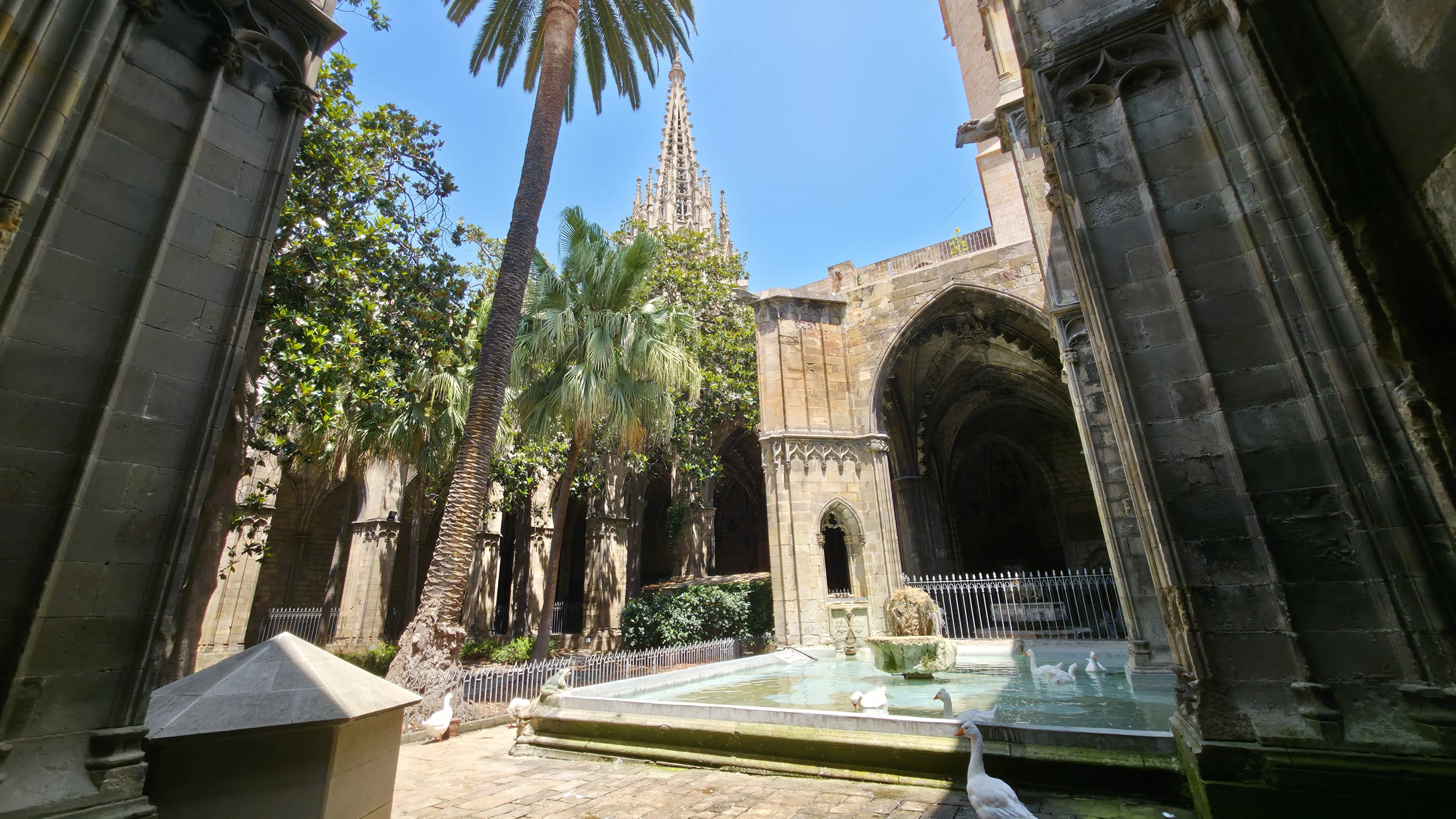
Walking in Her Footsteps
1. Barcelona Cathedral (La Seu)
Beneath the soaring Gothic nave of the Cathedral of the Holy Cross and Saint Eulàlia. Her alabaster tomb, sculpted by Lupo di Francesco, rests in a crypt designed by Jaume Fabre around 1339. Considered one of the finest examples of Italian Gothic influence in Catalonia, the tomb’s eight relief panels depict moments from the young saint’s life and martyrdom – angels hovering above, Roman soldiers below, and at the center, the dove symbolizing her soul’s ascent.
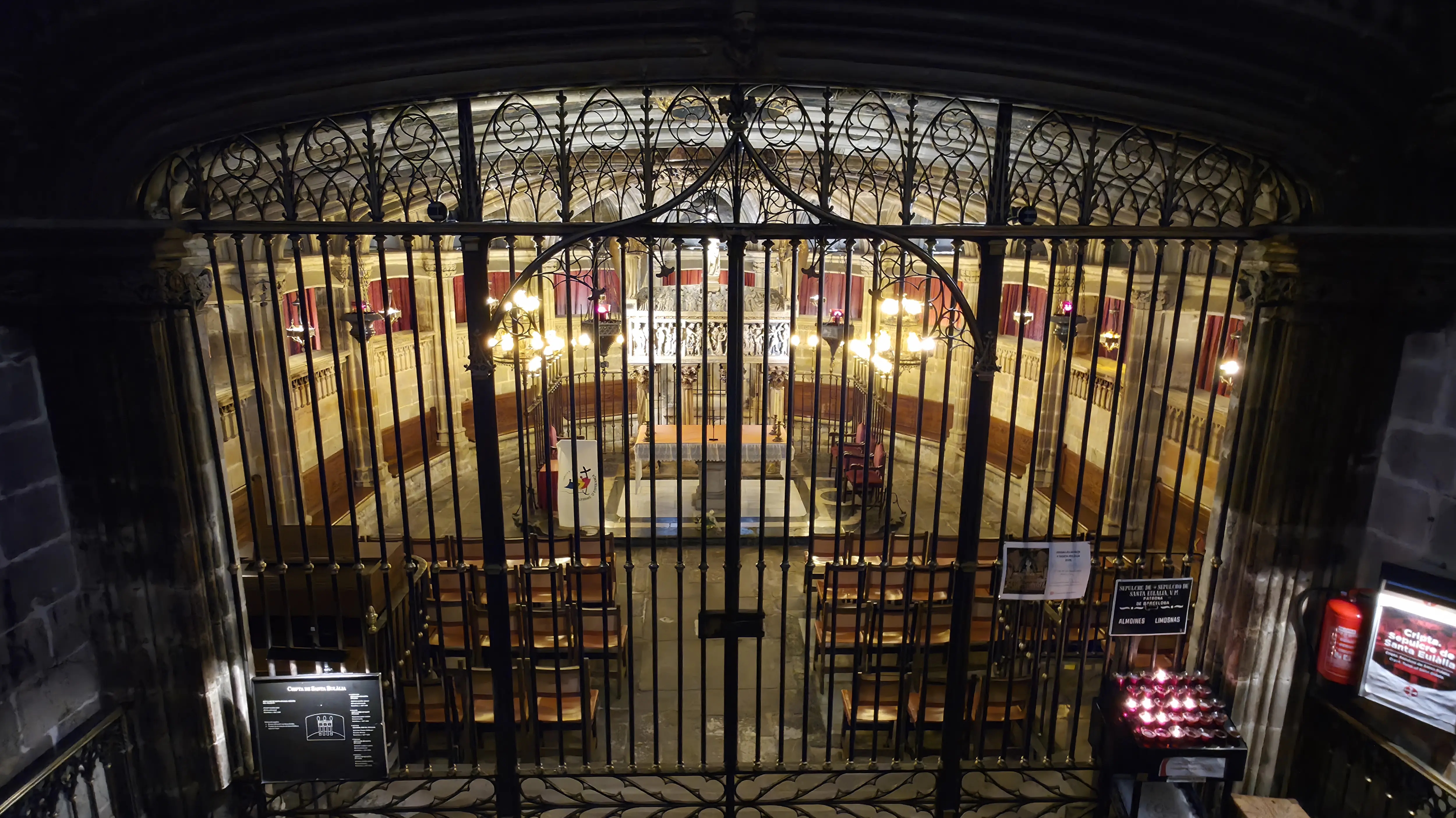
Step into the cloister, and you’ll meet Eulàlia’s symbolic companions – 13 white geese that roam freely among palms and fountains. The geese are watchful, loud, and oddly elegant; they remind visitors that purity and strength often share the same wings.
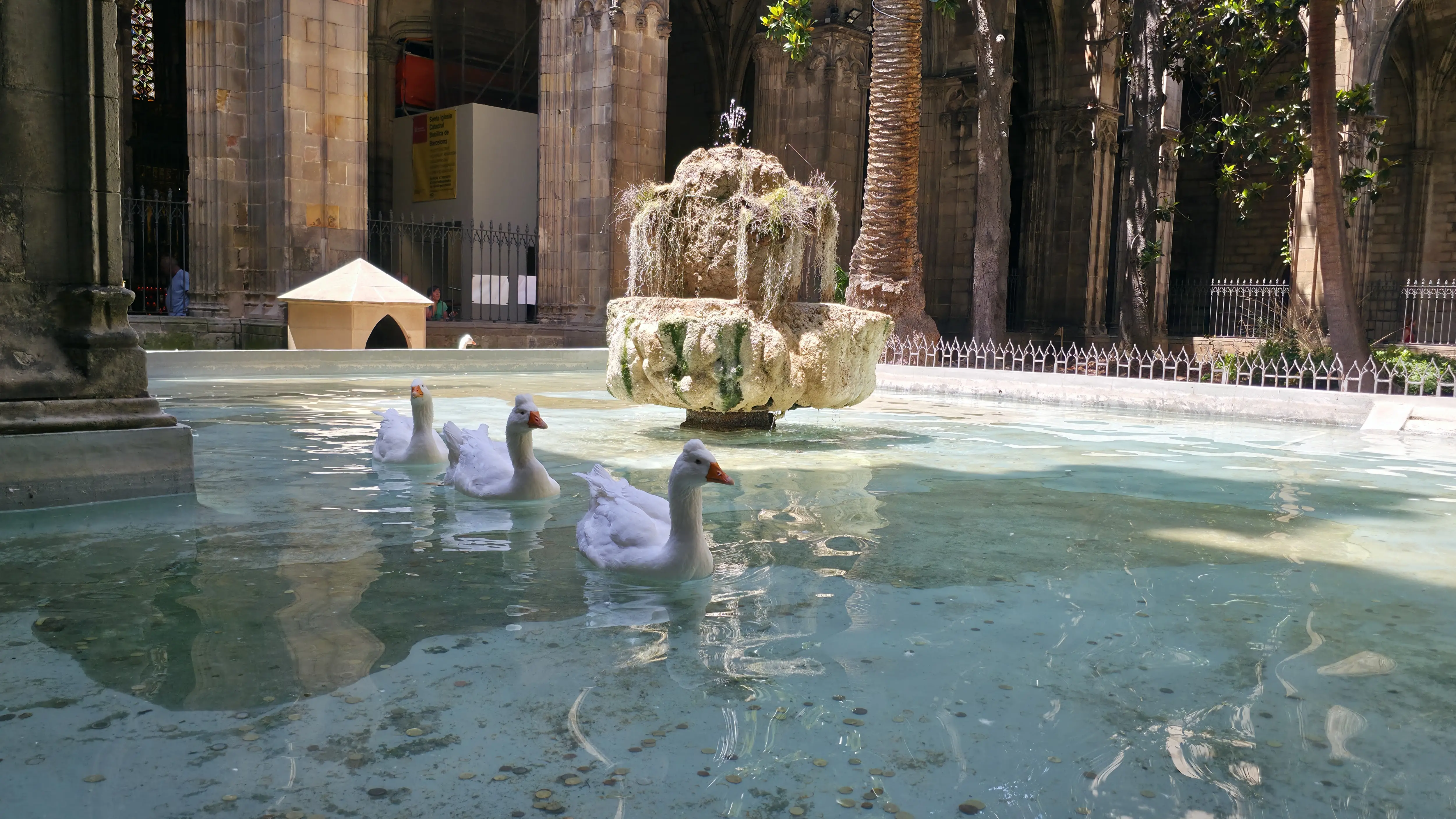
Climb to the cathedral’s rooftop terrace for one of Barcelona’s most serene views, spires tipped with crosses, the Mediterranean glimmering in the distance, and the hum of life carrying Eulàlia’s legacy far beyond the stones below.
2. Baixada de Santa Eulàlia
Just steps from the cathedral, a narrow lane called the Baixada de Santa Eulàlia winds downward between stone walls and wrought-iron balconies. According to legend, this was where the Romans dragged her through the streets, and where the miraculous snowfall covered her body in a white veil of dignity. Today, it’s one of the quietest corners of the Gothic Quarter. A sculpted relief of the saint marks the spot – serene, almost smiling. When you walk down this short descent, listen closely: the city seems to hush, as if paying silent respect to its young protector.
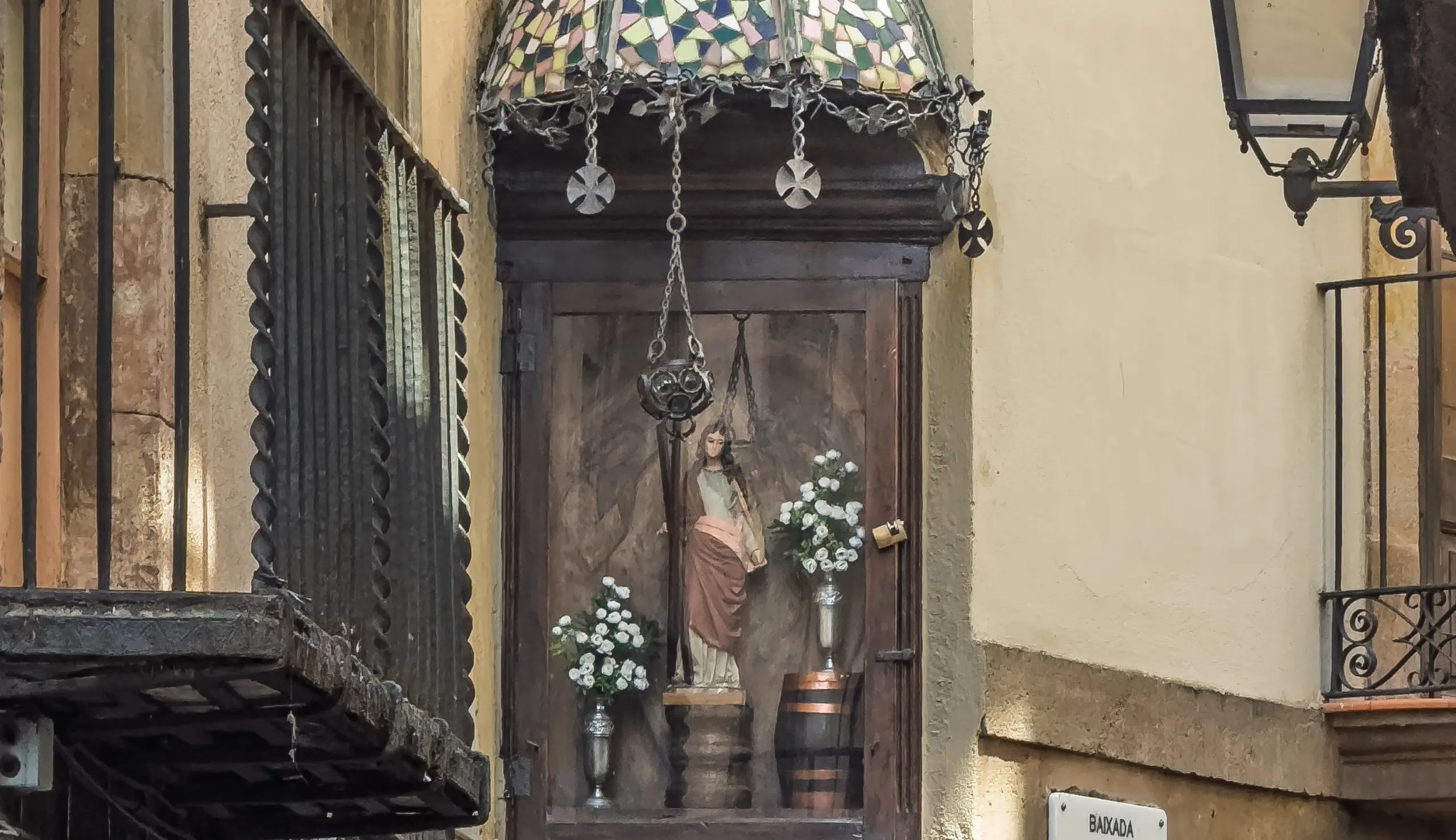
3. Plaça de Sant Jaume
Long before it was Barcelona’s political center, Plaça de Sant Jaume was the Roman Forum. Here, Eulàlia faced the governor Dacian and refused to denounce her faith. The thought that today’s speeches, festivals, and civic events unfold on the same stones where a thirteen-year-old once defied empire gives the square an unspoken gravity.
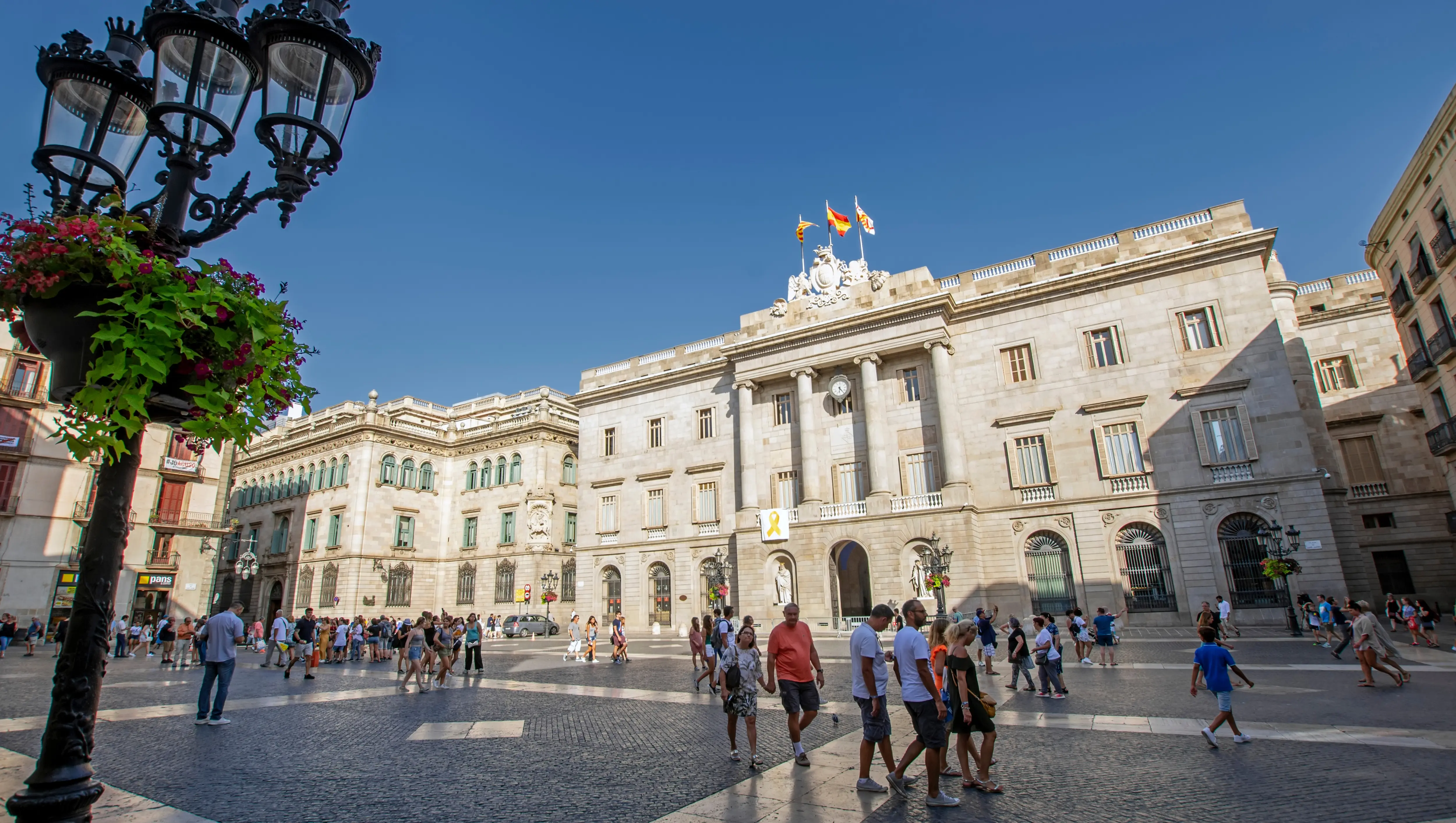
4. Sarrià
A gentle metro ride leads to Sarrià, a quiet district traditionally believed to be Saint Eulàlia’s birthplace. The Parish Church of Sant Vicenç de Sarrià preserves her memory in a small side chapel – peaceful and filled with light, where a carved wooden dove hangs above the altar. Whether or not this was truly where she was born, her spirit feels close here: humble, luminous, and deeply tied to the rhythm of community life.
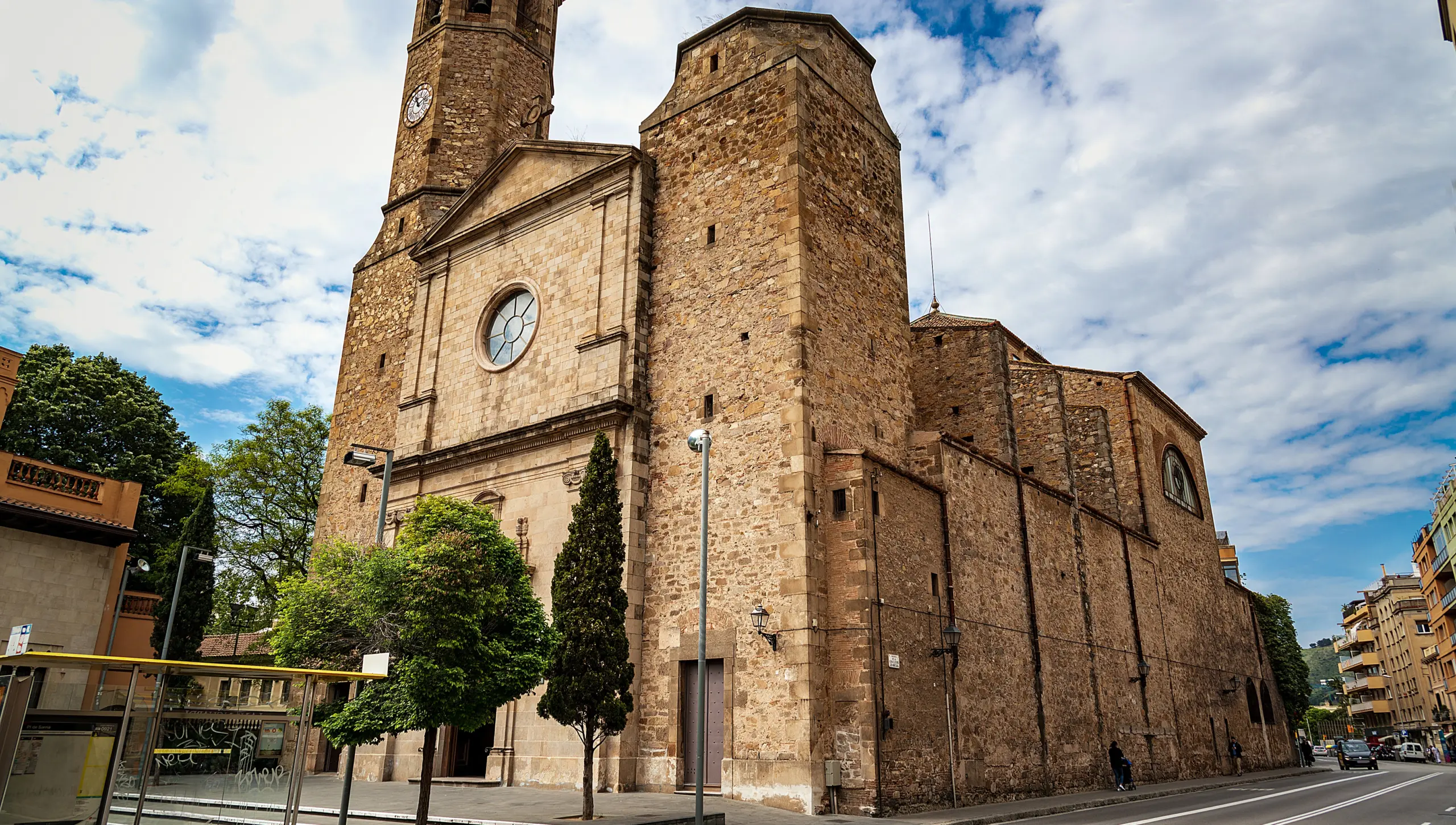
The Festival of Saint Eulàlia
Every February, Barcelona celebrates La Laia, one of the city’s most heartfelt festivals. For four to six days around February 12, the Gothic Quarter transforms into a celebration of faith, resilience, and community:
• Giant figures (gegants) parade through the narrow medieval streets to the steady beat of drums.
• Castellers rise skyward in Plaça de Sant Jaume, their human towers echoing Eulàlia’s quiet courage.
• Concerts and children’s parades fill the cloisters and squares with laughter and song.
• The Cathedral of Barcelona hosts solemn masses, and some years the façades of nearby buildings glow with artistic light projections, a modern tribute that recalls the miracle of the snow that once covered the young saint’s body.
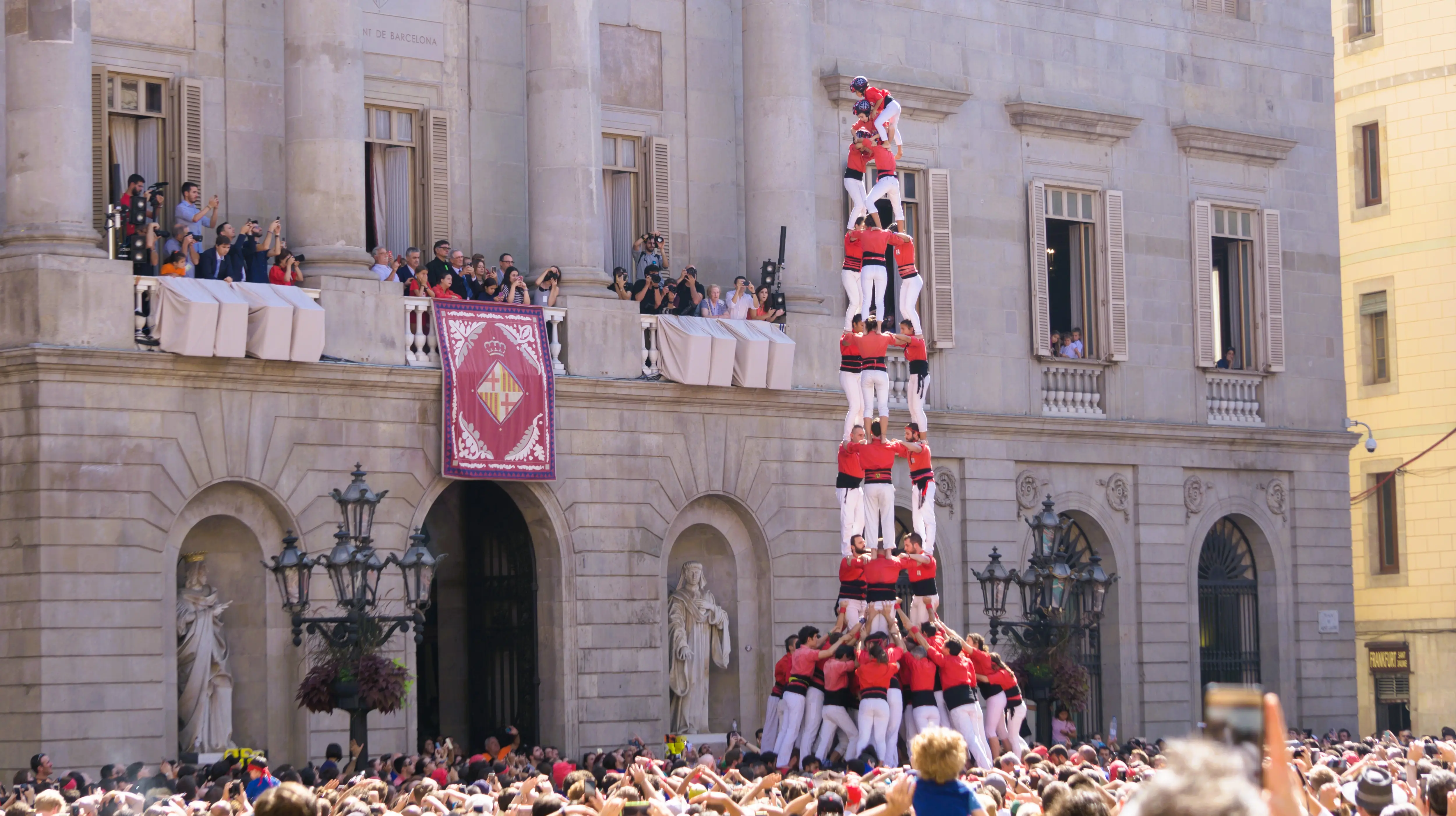
It’s a beautiful contradiction – a festival of life honoring a child who died for her faith, proof that remembrance in Barcelona always dances rather than mourns.
Through My Eyes
I visited on a summer afternoon, when the cathedral bells rang across the quarter. In the crypt, I knelt by the railing, watching the flicker of hundreds of candles reflected in the alabaster. It felt less like sorrow and more like stillness, a space that holds both suffering and serenity.
Later, in the cloister, I watched the geese glide across the water, their reflections broken by ripples of sunlight. The sound of their footsteps echoed softly on the stone – a simple, living reminder of a legend that still breathes.

I thought of Eulàlia not as a martyr, but as a mirror for Barcelona itself: unafraid to be gentle, steadfast in its convictions, radiant in its contradictions. In a city known for its dragons and dreamers, she is its dove – pure, luminous, unbroken.
Practical Tips for Visitors
- Cathedral of Barcelona: Pla de la Seu s/n, Gothic Quarter.
- Opening Hours: Opening Hours: Mon-Fri 9:30 a.m.-6:30 p.m.; Sat 9:30 a.m.-5:15 p.m.; Sun 2:00-5:00 p.m. (varies seasonally, check official website).
- Crypt of Saint Eulàlia: Located directly beneath the main altar. Photography discouraged; silence required.
- Cloister Geese: Visible throughout the day; feedings occur morning and late afternoon.
- Festival of Saint Eulàlia: Annually around Feb 12. Program at barcelona.cat.
- Tip: Visit early morning for quiet reflection, or at sunset when the façade glows rose gold and the pigeons circle above Plaça de la Seu.
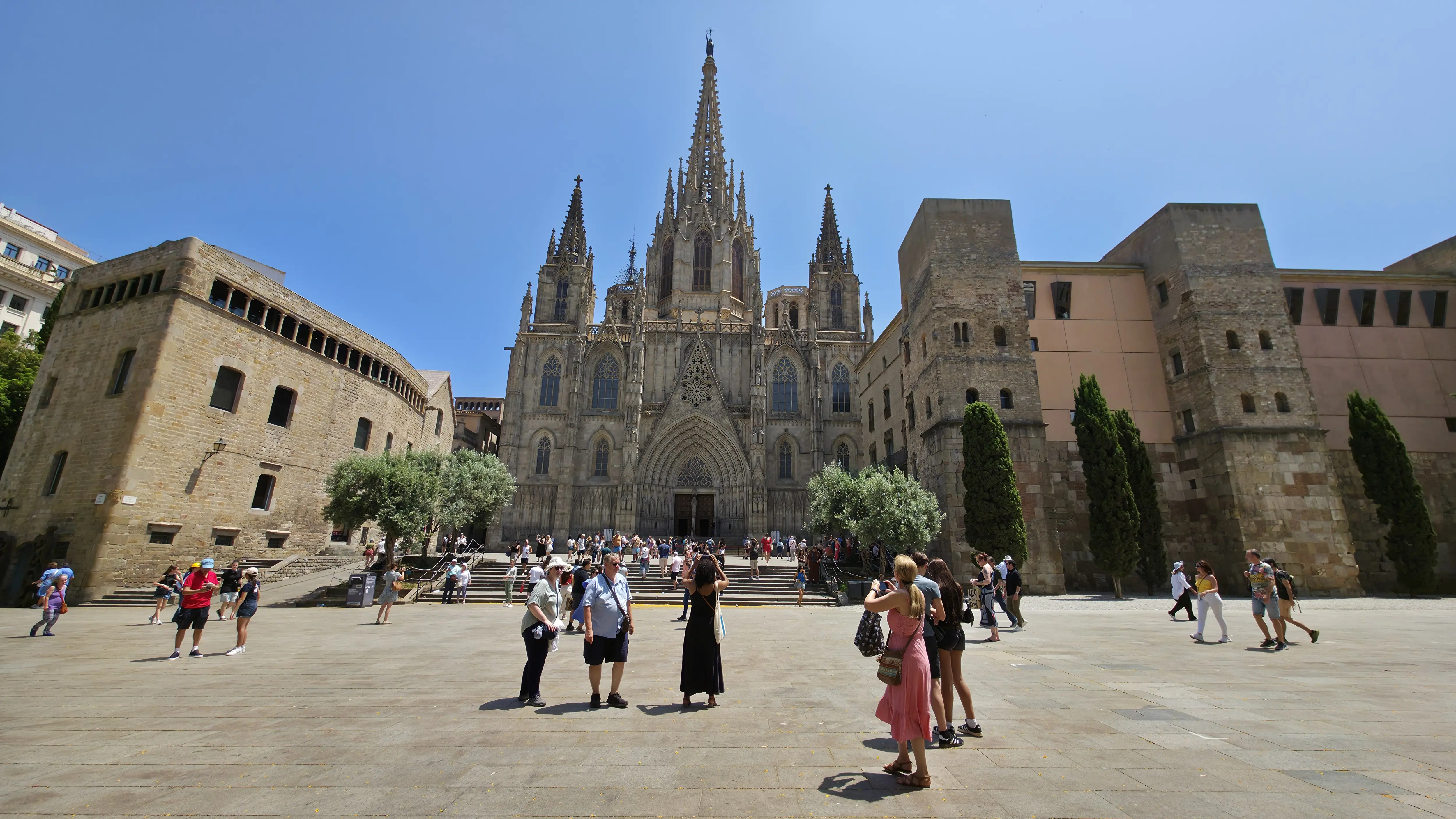
Final Thoughts
Saint Eulàlia’s legend has survived nearly 1,700 years not because it is tragic, but because it is luminous. Her courage and faith became the moral compass of a city that thrives on conviction and compassion alike.
As dusk fell over the Gothic Quarter, I lingered in the square, watching the cathedral lights flicker on. The air smelled of stone and wax, and somewhere nearby, a choir began to sing. A group of geese honked softly in the cloister, thirteen voices in quiet harmony. And I thought: maybe that’s what Barcelona truly is, a city that remembers its saints not in silence, but in music, color, and light.
Have you ever followed Saint Eulàlia’s path through Barcelona? Tell me what moved you most – the legend, the cathedral, or the doves that still guard her story.
xoxo,
Bubbly💕

